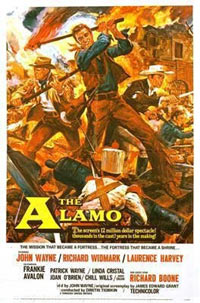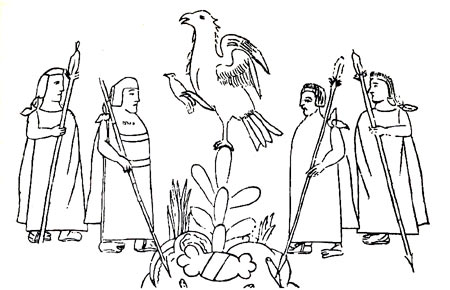|
Tenochtitlán, Mexico City
Four hours
south of where I write this article, by toll road, is the
Mexican capital. Formerly called Tenochtitlán, the remains of
this city are now buried beneath the flagstones of the
polluted metropolis that is Mexico City. Visitors can still
marvel at Aztec architecture in tours that pass underneath the
modern Zócalo (Plaza de la Constitución), the central square
of Mexico City. Surfacing, they can expect to encounter
another one of the many demonstrations against the legitimacy
of the declared winning candidate of the 2006 Mexican
presidential elections, Felipe de Jesús Calderón Hinojosa.
Calderón, the candidate for Mexico's neoliberal PAN party, won
a statistically impossible
[2] victory over Mexico
City's
former mayor, the PRD party candidate Andrés Manuel López
Obrador. Obrador's response was to set up a parallel
government. One wonders what would have happened if
presidential candidate Albert Arnold Gore, Jr. had taken a
similar approach in the United States elections of 2000.
The
Mexican citizens refer to their great capital as the 'Distrito
Federal' (or DF for short). The DF is now the world's second
largest city, by population, after Tokyo, Japan, with 20
million official inhabitants.
Until
1521, DF was the capital of the Méxica tribe (whom we often
refer to as the Aztecs). They chose to build Tenochtitlán, the
umbilical centre for their extensive empire, on an island in a
defensible lake (now covered with landfill). Legend has it
that the site was chosen when the Méxica discovered an eagle
eating a snake on a cactus. This legend is now depicted on the
modern Mexican flag.
Hernán Cortés,
the illegitimate son of impoverished Spanish soldier Martín
Cortés, conquered Tenochtitlán from Emperor Moctezuma II (Motecuhzoma
Xocoyotzin) and razed it to the ground. Hernán Cortés was then
just thirty-four years of age; he had migrated to Cuba from
Extremadura, Spain, just twelve years before his invasion of
the North American mainland. DF was also conquered by
nationalist insurgents in the 1800s and the 1900s, and then by
the USA in 1848.
This
article explores its current 'ownership'.
Annexation
As one
drives further north from Central Mexico, the highland plains
slowly descend into the drier and wider deserts of Chihuahua
and Durango, eventually reaching the current building project
that is President Bush's immigrant wall. The current Mexican-US border is conspicuous for its huge dollar-denominated
border retail outlets, with their lines of cars with Mexican
plates, and the polluted NAFTA-focused maquiladoras
(Mexican export-factories), on the southern side.
The US
southwestern states of California, Nevada, New Mexico, parts
of Wyoming and Colorado, Arizona and Texas were part of New
Spain and later (for about thirty years) of the Mexican
Republic, after Mexico finally won its independence from the
Spanish. Four hundred million acres (corresponding to these
ceded southwestern states), were eventually bought from Mexico
for three payments, totalling just over 40 million dollars.
The deal was not well received in Mexico but was forced
through by the US armies after their defeat of the Mexicans in
the 1846-1848 war.
The Alamo, Two Histories
|

The Alamo, 1960, directed
by
and starring John Wayne
|
US history
presents us with folkloric references to Davy Crockett and Jim
Bowie, famous for their hats and knives respectively. These
two were overrun and killed by their own Mexican army at The
Alamo. The mythical tale, immortalised by John Wayne in the
last century, and by the US newspapers in the nineteenth
century, was the birthplace of one of the first political
catch phrases: 'Remember the Alamo!', something every US
schoolchild learns to this day, even if they don't know why.
Widely
publicised at the time, The Alamo raised sufficient outrage
north of the border to enable President Polk to declare war on
his southern neighbour, Mexico. Polk's Mexican land grab, a
kind of manifest destiny looking south, proved to be quite a
bargain. However Mexican 'agreement' to the terms offered
required that the US army also invade Tenochtitlán in 1848.
In order
to understand this process, it is necessary to take a
revisionist look at the historical context of 'The Alamo'. The
Texan insurgency of the 1830s was an internal Mexican matter.
Texan rebels were fighting for unrestricted slavery rights
contravening the Federal Mexican government who had declared a
slavery ban in September 1829. The threat of freed slaves
outraged the Texan cotton farmers, so political pressure was
brought to bear in DF. One month later, the Mexican laws were
changed to allow slavery, but only in Texas. This exception
carried some restrictions (no new slaves). It was not to
suffice. Restrictions on Texan slaves threatened the cotton
industry with increased labour costs and higher taxation and
led to Texan plans for self-determination. This finally led to
a failed rebellion and to The Alamo. After the Texan
insurgency was put down, Polk declared his war on Mexico, an
economic disaster from a Mexican perspective, resulting in the
annexation of about half of Mexico's territory (the four
hundred million acres mentioned above).
|


